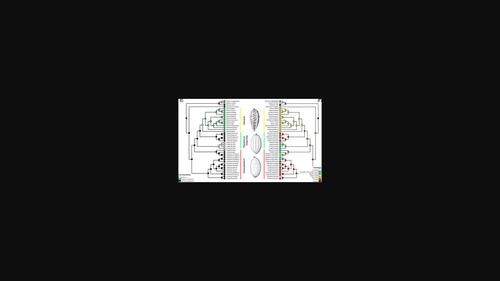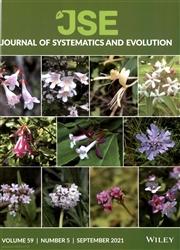A phylogenetic framework to study desirable traits in the wild relatives of Theobroma cacao (Malvaceae)
IF 2.9
1区 生物学
Q1 Agricultural and Biological Sciences
引用次数: 0
Abstract
Crop wild relatives (CWRs) of cultivated species may provide a source of genetic variation that can contribute to improving product quantity and quality. To adequately use these potential resources, it is useful to understand how CWRs are related to the cultivated species and to each other to determine how key crop traits have evolved and discover potentially usable genetic information. The chocolate industry is expanding and yet is under threat from a variety of causes, including pathogens and climate change.

研究可可豆(锦葵科)野生近缘植物理想性状的系统发育框架
栽培物种的作物野生近缘种(CWRs)可提供遗传变异源,有助于提高产品的数量和质量。为了充分利用这些潜在资源,了解作物野生近缘种与栽培品种的关系以及它们之间的关系非常有用,有助于确定作物关键性状的进化过程并发现潜在的可用遗传信息。巧克力产业正在不断扩大,但也面临着病原体和气候变化等各种原因的威胁。巧克力的原产地可可豆(马鞭草科)是可可豆属的代表植物,可可豆属由四个属和大约 40 个种组成,早在 2500 万年前就开始多样化。该族内部的巨大多样性表明,其代表物种可能表现出有利的农艺性状。在这项研究中,我们提出了迄今为止在分类学上最全面的可可豆科系统发育。来自 WRKY 基因的 DNA 序列数据被组合到一个包含 56 个形态特征的矩阵中,并使用贝叶斯方法进行分析。形态学数据集的加入提高了系统发生树某些分支的分辨率和支持率。所选形态特征的进化轨迹被重建到系统发生树上。该系统发育为形态和生理特征进化研究提供了一个框架,有助于寻找与农艺相关的特征。
本文章由计算机程序翻译,如有差异,请以英文原文为准。
求助全文
约1分钟内获得全文
求助全文
来源期刊

Journal of Systematics and Evolution
Agricultural and Biological Sciences-Ecology, Evolution, Behavior and Systematics
CiteScore
7.40
自引率
8.10%
发文量
1368
审稿时长
6-12 weeks
期刊介绍:
Journal of Systematics and Evolution (JSE, since 2008; formerly Acta Phytotaxonomica Sinica) is a plant-based international journal newly dedicated to the description and understanding of the biological diversity. It covers: description of new taxa, monographic revision, phylogenetics, molecular evolution and genome evolution, evolutionary developmental biology, evolutionary ecology, population biology, conservation biology, biogeography, paleobiology, evolutionary theories, and related subjects.
 求助内容:
求助内容: 应助结果提醒方式:
应助结果提醒方式:


